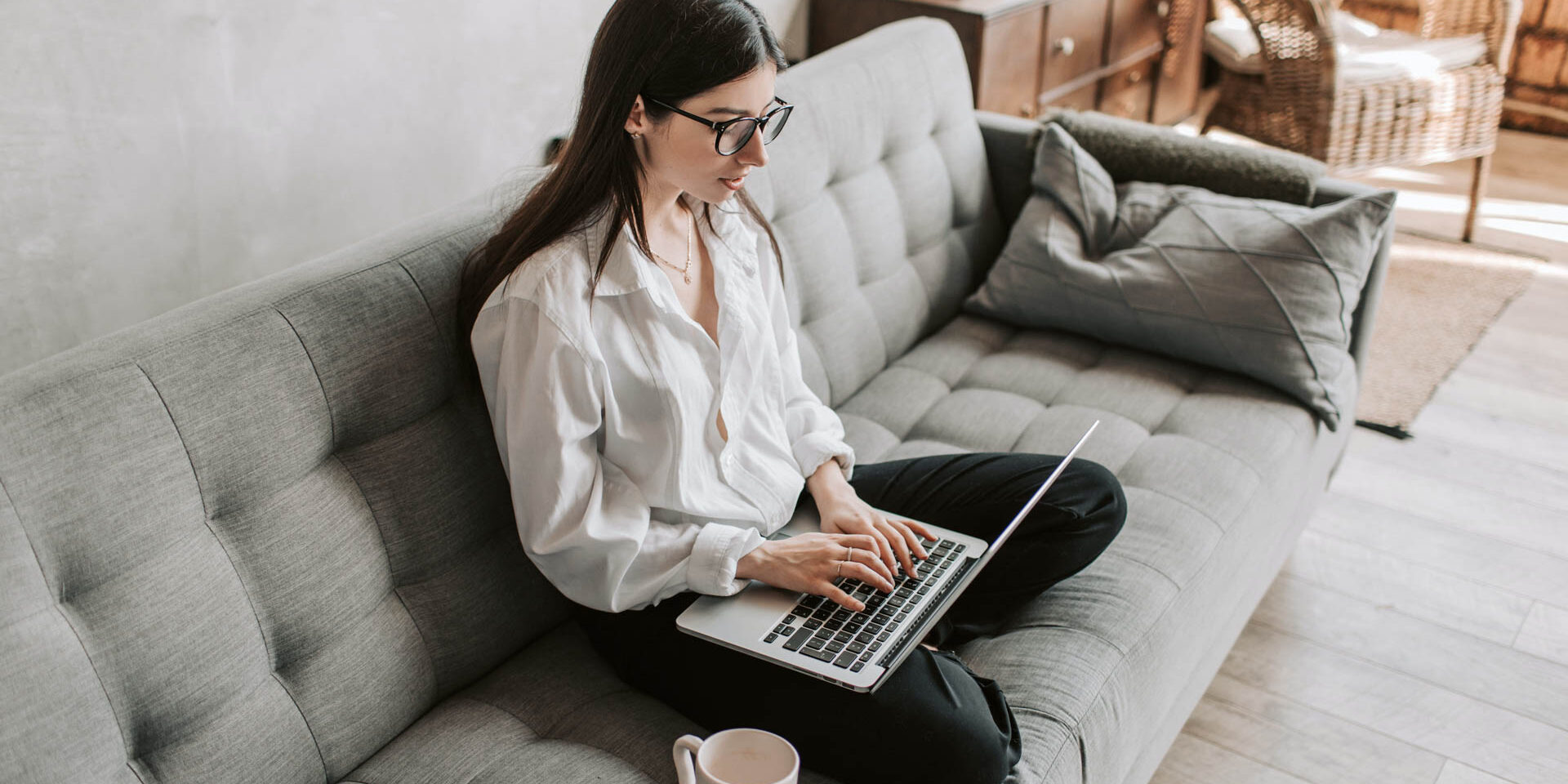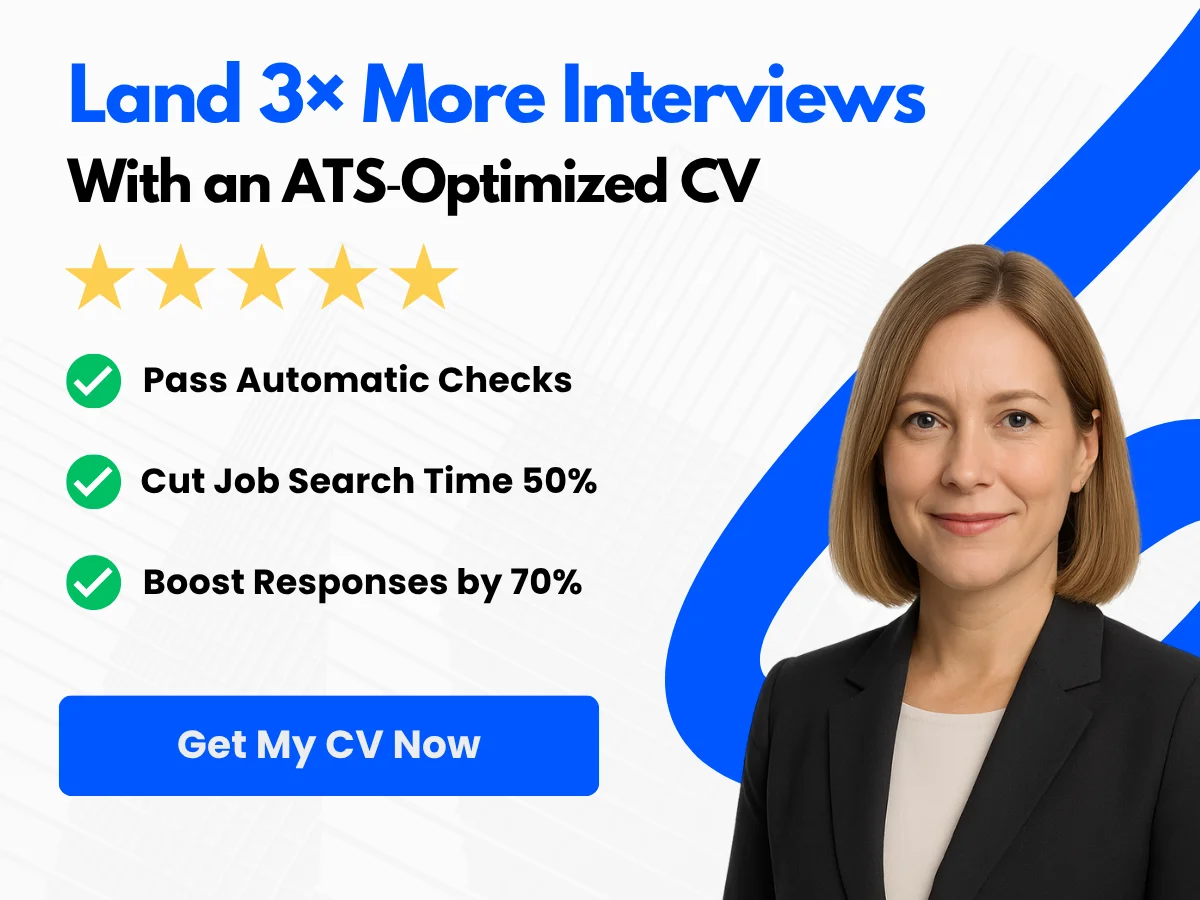Every interaction counts, and one of the most crucial yet often overlooked steps in the interview process is the follow-up email. This simple gesture not only reinforces your interest in the position but also serves as an opportunity to leave a lasting impression on your potential employer. A well-crafted follow-up email can set you apart from other candidates, showcasing your professionalism and enthusiasm while providing a chance to reiterate your qualifications and fit for the role.
In this article, we will delve into the significance of follow-up emails after interviews, exploring how they can enhance your candidacy and strengthen your relationship with hiring managers. You will discover best practices for writing effective follow-up messages, including timing, tone, and content. Additionally, we will provide a variety of examples tailored to different scenarios, ensuring you have the tools you need to craft a compelling follow-up that resonates with your audience. Whether you’re a seasoned professional or a recent graduate, mastering the art of the follow-up email can be a game-changer in your job search journey.
Exploring the Follow-Up Email
Definition and Purpose
A follow-up email after an interview is a professional communication sent to the interviewer or hiring manager to express gratitude for the opportunity, reiterate interest in the position, and reinforce qualifications. This email serves multiple purposes:
- Thank You: It shows appreciation for the time and effort the interviewer invested in the hiring process.
- Reinforcement: It allows candidates to reiterate their interest in the position and the company, reminding the interviewer of their qualifications and fit for the role.
- Clarification: If there were any points during the interview that were unclear or if the candidate forgot to mention a relevant experience, the follow-up email provides an opportunity to clarify or add this information.
- Professionalism: Sending a follow-up email demonstrates professionalism and good etiquette, which can leave a positive impression on the interviewer.
Timing: When to Send a Follow-Up Email
Timing is crucial when it comes to sending a follow-up email. The general consensus is to send the email within 24 to 48 hours after the interview. This timeframe ensures that the interview is still fresh in the interviewer’s mind while also allowing the candidate to reflect on the conversation and craft a thoughtful message.
Here are some key considerations regarding timing:


- 24-Hour Rule: Aim to send your follow-up email within 24 hours of the interview. This shows enthusiasm and respect for the interviewer’s time.
- Weekends and Holidays: If your interview falls on a Friday or before a holiday, consider sending your email on the next business day. This helps avoid your email getting lost in a weekend or holiday inbox.
- Follow-Up After a Group Interview: If you participated in a panel or group interview, it’s advisable to send individual follow-up emails to each interviewer, personalizing each message based on your conversation with them.
- Second Interviews: If you have a second interview, it’s still important to send a follow-up email after the first one, as it reinforces your interest and keeps you top of mind.
The Impact of a Well-Crafted Follow-Up Email
A well-crafted follow-up email can significantly impact the hiring decision. Here are several ways in which a thoughtful follow-up can influence the outcome:
- Memorability: In a competitive job market, candidates often face stiff competition. A personalized follow-up email can help you stand out from other candidates by reminding the interviewer of your unique qualifications and fit for the role.
- Building Rapport: A follow-up email can help strengthen the relationship between you and the interviewer. By referencing specific topics discussed during the interview, you create a connection that can make you more memorable.
- Addressing Concerns: If there were any concerns raised during the interview, a follow-up email provides an opportunity to address them directly. This proactive approach can alleviate any doubts the interviewer may have about your candidacy.
- Demonstrating Enthusiasm: A follow-up email is a chance to express your enthusiasm for the position and the company. This enthusiasm can be contagious and may positively influence the interviewer’s perception of you.
- Professionalism and Attention to Detail: A well-written email reflects your professionalism and attention to detail, qualities that are highly valued in any candidate. It shows that you take the hiring process seriously and are committed to making a good impression.
Examples of Follow-Up Emails
To illustrate the effectiveness of a follow-up email, here are a few examples tailored to different scenarios:
Example 1: General Thank You Email
Subject: Thank You for the Opportunity
Dear [Interviewer's Name],
I hope this message finds you well. I wanted to take a moment to thank you for the opportunity to interview for the [Job Title] position at [Company Name] on [Date]. I truly enjoyed our conversation and learning more about the innovative projects your team is working on.
I am very excited about the possibility of joining [Company Name] and contributing to [specific project or goal discussed in the interview]. I believe my skills in [mention relevant skills or experiences] align well with the team’s objectives.
Thank you once again for your time and consideration. Please feel free to reach out if you need any more information from my side.
Best regards,
[Your Name]
[Your LinkedIn Profile] (if applicable)
[Your Phone Number]
Example 2: Follow-Up Email Addressing a Concern
Subject: Thank You and Follow-Up
Dear [Interviewer's Name],
Thank you for the opportunity to interview for the [Job Title] position at [Company Name] on [Date]. I appreciated the chance to discuss my background and how it aligns with the goals of your team.
During our conversation, I sensed that my experience with [specific skill or experience] might not have fully addressed your concerns. I want to clarify that I have successfully [provide a brief example or achievement related to the concern]. I am confident that this experience will allow me to contribute effectively to your team.
I am very enthusiastic about the possibility of working at [Company Name] and contributing to [specific project or goal]. Thank you once again for your time and consideration.
Warm regards,
[Your Name]
[Your LinkedIn Profile] (if applicable)
[Your Phone Number]
Example 3: Follow-Up After a Group Interview
Subject: Thank You for the Interview
Dear [Interviewer's Name],
I hope you are doing well. I wanted to extend my gratitude for the opportunity to interview for the [Job Title] position with you and the team on [Date]. It was a pleasure to meet everyone and learn more about the exciting work being done at [Company Name].
I particularly enjoyed our discussion about [specific topic discussed], and it reinforced my enthusiasm for the role. I believe my background in [mention relevant experience] would allow me to contribute positively to your team.
Please convey my thanks to the other team members as well. I look forward to the possibility of working together.
Best wishes,
[Your Name]
[Your LinkedIn Profile] (if applicable)
[Your Phone Number]
A follow-up email after an interview is not just a formality; it is a strategic tool that can enhance your candidacy. By understanding its purpose, timing, and impact, you can craft a message that resonates with your interviewer and sets you apart from the competition.
Components of an Effective Follow-Up Email
Sending a follow-up email after an interview is a crucial step in the job application process. It not only demonstrates your professionalism but also reinforces your interest in the position. To craft an effective follow-up email, it’s essential to include several key components. Below, we’ll explore each of these elements in detail, providing examples and insights to help you create a compelling message.
Subject Line
The subject line of your follow-up email is the first thing the recipient will see, so it’s important to make it clear and concise. A well-crafted subject line can grab the hiring manager’s attention and encourage them to open your email. Here are a few examples:
- Thank You – [Your Name]
- Follow-Up on Interview for [Position Title]
- Appreciation for the Opportunity – [Your Name]
Choose a subject line that reflects the tone of your interview and your relationship with the interviewer. If the interview was formal, opt for a straightforward subject line. If it was more casual, you might choose something a bit friendlier.


Greeting
Start your email with a polite greeting. Address the interviewer by their name, using the appropriate title (Mr., Ms., Dr., etc.) unless they specifically told you to use their first name. For example:
Dear Ms. Johnson,
Using the correct greeting sets a respectful tone for your email and shows that you value the interviewer’s position.
Expressing Gratitude
One of the most important components of your follow-up email is expressing gratitude for the opportunity to interview. This not only shows your appreciation but also reinforces a positive impression. Here’s how you might phrase this:
Thank you for taking the time to meet with me on July 1, 2025. I truly enjoyed our conversation and learning more about the exciting work at [Company Name].


Be specific about what you appreciated. Mentioning a particular aspect of the interview or the company can make your gratitude feel more genuine.
Reiterating Interest in the Position
After expressing your gratitude, it’s essential to reiterate your interest in the position. This reaffirms your enthusiasm and commitment to the role. You could say:
I am very excited about the opportunity to join [Company Name] as a [Position Title] and contribute to [specific project or goal discussed in the interview].
By linking your interest to specific aspects of the role or company, you demonstrate that you are not just sending a generic follow-up email.
Highlighting Key Points from the Interview
To make your follow-up email stand out, reference key points from your interview. This shows that you were engaged and attentive during the conversation. For example:
During our discussion, I was particularly intrigued by [specific project, value, or initiative mentioned]. I believe my experience in [related experience or skill] would allow me to contribute effectively to this effort.


Highlighting these points not only reinforces your qualifications but also reminds the interviewer of your conversation, making it easier for them to recall your candidacy.
Addressing Any Unanswered Questions
If there were any questions during the interview that you felt you didn’t answer fully, this is a great opportunity to address them. You might say:
I wanted to take a moment to elaborate on my experience with [specific skill or project] that we discussed. I believe this experience would be beneficial in the [Position Title] role because [reason].
By addressing any gaps in your responses, you demonstrate your commitment to providing a complete picture of your qualifications.
Providing Additional Information
If you have any additional information that could support your application, such as a portfolio, references, or relevant certifications, include this in your email. You could write:
As we discussed, I have attached my portfolio for your review. I believe it showcases my skills and aligns well with the goals of [Company Name].
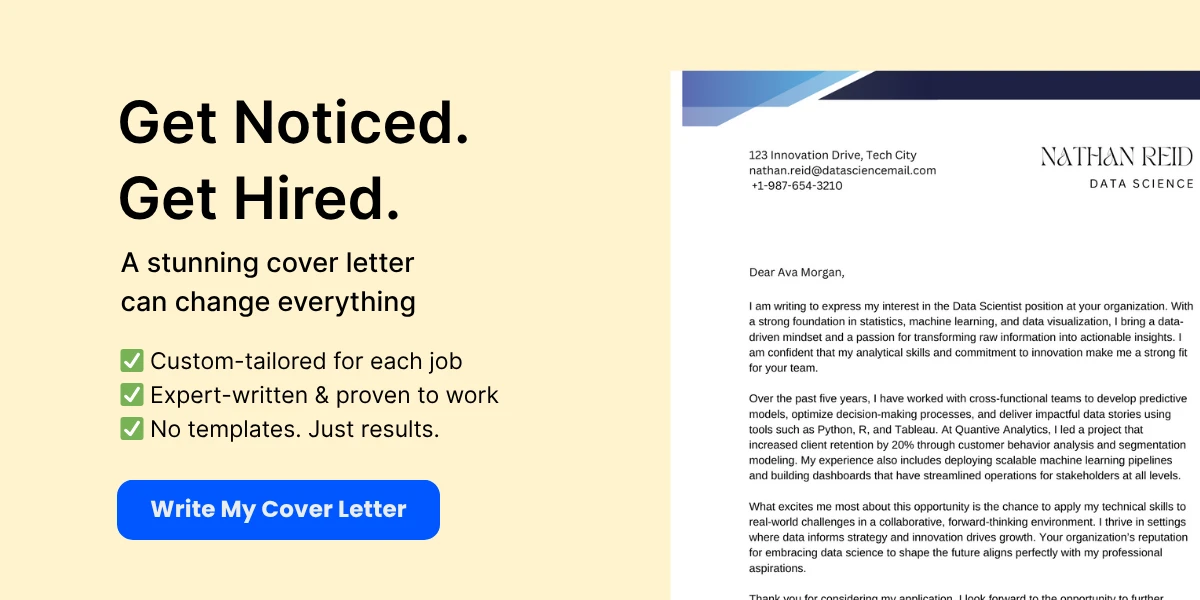
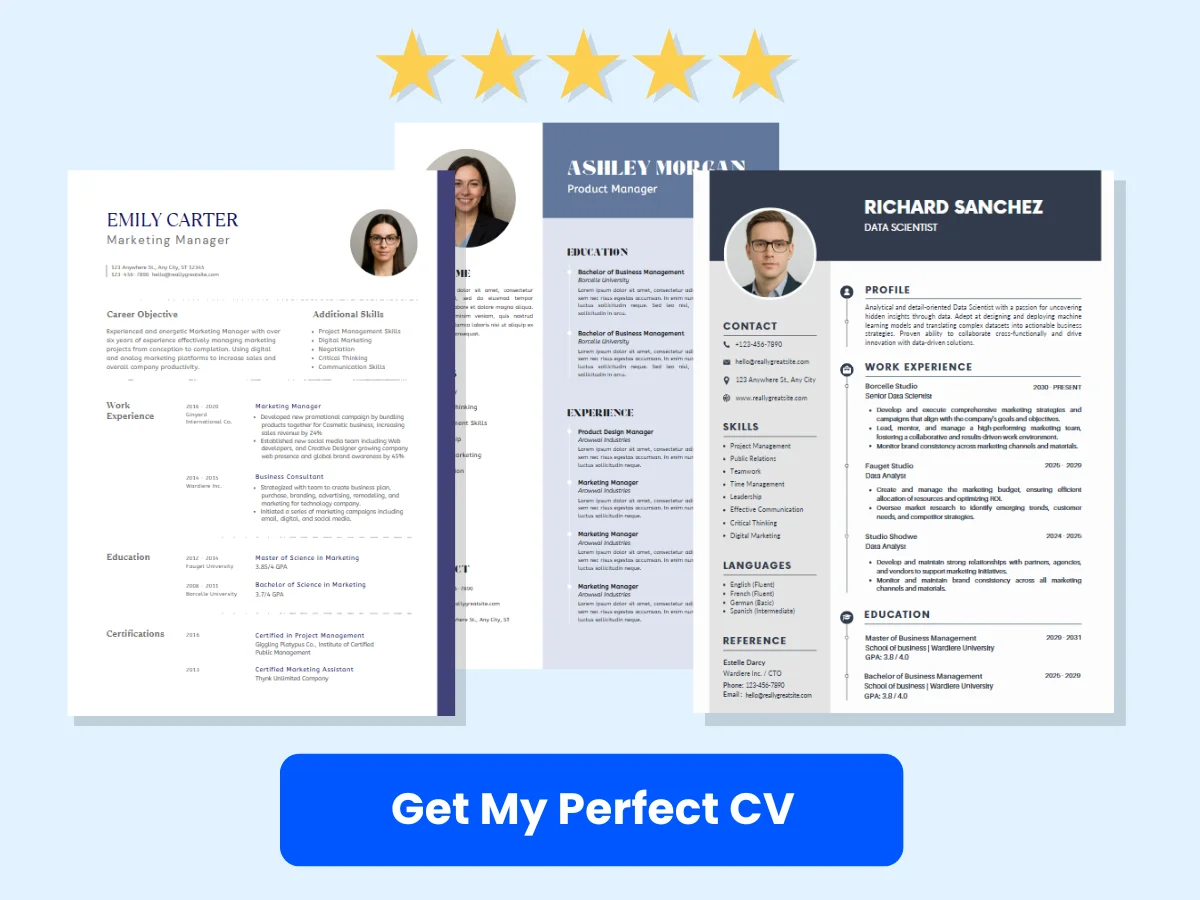
Make sure to attach any documents you mention and ensure they are relevant to the position.
Closing Remarks
In your closing remarks, reiterate your appreciation and express your eagerness to hear back. A simple yet effective closing could be:
Thank you once again for the opportunity to interview for the [Position Title]. I look forward to the possibility of working together and contributing to [Company Name]. Please feel free to reach out if you need any more information from my side.
This leaves the door open for further communication and shows that you are proactive and willing to assist.

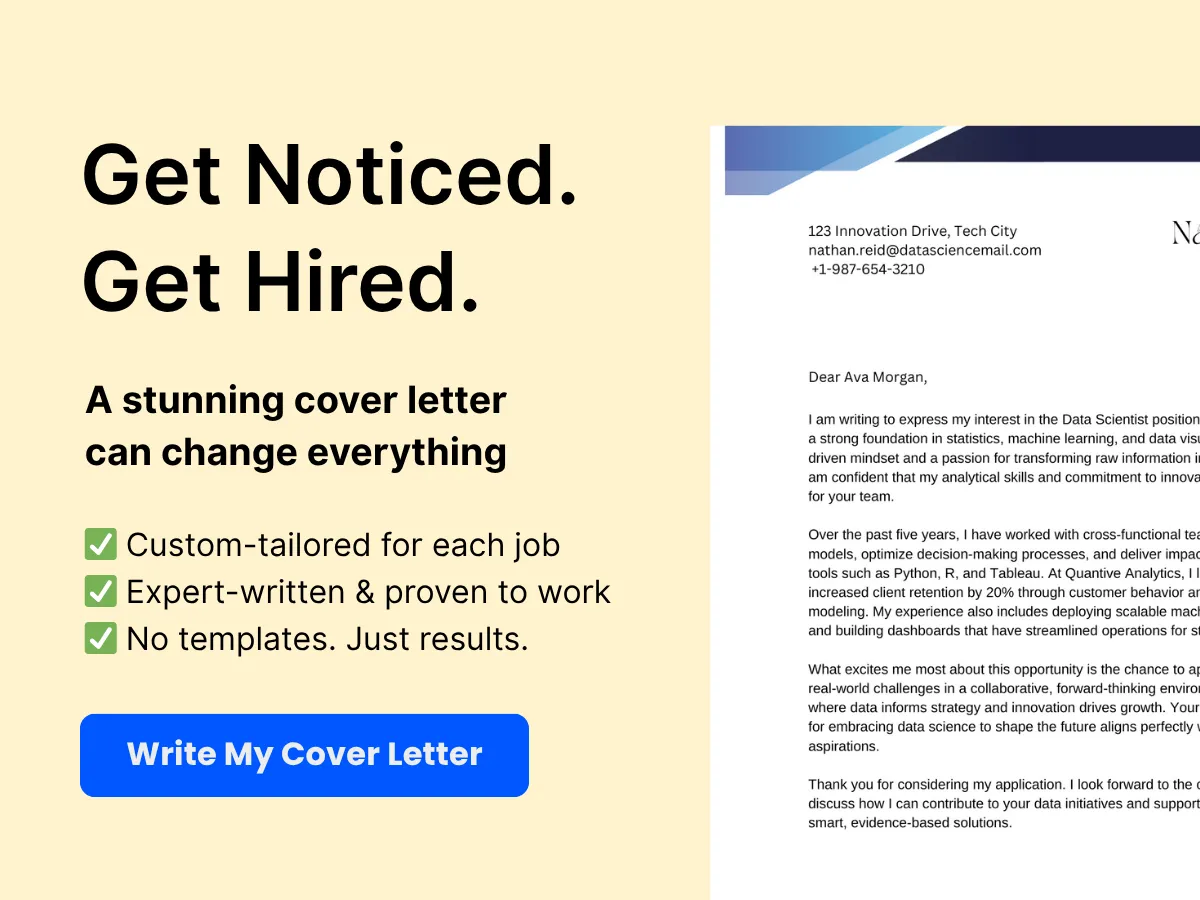
Signature
Finally, end your email with a professional signature. Include your full name, phone number, and LinkedIn profile (if applicable). Here’s an example:
Best regards,
[Your Name]
[Your Phone Number]
[Your LinkedIn Profile URL]
Using a professional signature not only provides your contact information but also reinforces your professionalism.
By incorporating these components into your follow-up email, you can create a thoughtful and effective message that leaves a lasting impression on your interviewer. Remember, the goal is to reinforce your interest in the position, highlight your qualifications, and maintain a positive relationship with the hiring team.
Best Practices for Writing Follow-Up Emails
Sending a follow-up email after an interview is a crucial step in the job application process. It not only demonstrates your professionalism but also reinforces your interest in the position. To craft an effective follow-up email, consider the following best practices that can help you stand out in a competitive job market.


Personalization: Tailoring the Email to the Interviewer
One of the most important aspects of a follow-up email is personalization. A generic email can come off as insincere and may not leave a lasting impression. Here are some tips on how to personalize your follow-up:
- Use the Interviewer’s Name: Always address the interviewer by their name. This simple act shows that you value their time and are attentive to details. For example, instead of starting with “Dear Hiring Manager,” use “Dear Ms. Smith.”
- Reference Specific Topics Discussed: Mention specific points from your interview that resonated with you. This could be a project the company is working on, a challenge they face, or something personal the interviewer shared. For instance, “I enjoyed our discussion about the upcoming marketing campaign and how it aligns with my experience in digital marketing.”
- Express Genuine Gratitude: Thank the interviewer for their time and the opportunity to learn more about the company. A personalized thank you can go a long way. For example, “Thank you for taking the time to discuss the role with me. I appreciate the insights you shared about the company culture.”
Professional Tone and Language
Maintaining a professional tone is essential in your follow-up email. This reflects your understanding of workplace etiquette and your seriousness about the position. Here are some guidelines to ensure your tone remains professional:
- Avoid Slang and Informal Language: Use formal language and avoid colloquialisms. Instead of saying “I’m super excited about the job,” opt for “I am very enthusiastic about the opportunity.”
- Be Respectful and Courteous: Use polite language throughout your email. Phrases like “I appreciate your consideration” or “Thank you for your time” convey respect.
- Keep It Positive: Focus on the positive aspects of the interview and your interest in the role. Avoid any negative comments about the interview process or the company.
Conciseness and Clarity
In today’s fast-paced world, hiring managers often have limited time to read emails. Therefore, it’s crucial to be concise and clear in your follow-up. Here are some strategies to achieve this:
- Get to the Point Quickly: Start with a brief introduction and immediately express your gratitude. For example, “I wanted to take a moment to thank you for the opportunity to interview for the Marketing Manager position.”
- Use Short Paragraphs: Break your email into short, digestible paragraphs. This makes it easier for the reader to scan your email quickly.
- Limit Your Email to One Page: Aim for a length that can be read in under a minute. A few well-crafted paragraphs are often more effective than a lengthy email.
Proofreading and Error-Free Writing
Nothing undermines your professionalism more than typos and grammatical errors. A follow-up email should be polished and free of mistakes. Here are some tips for ensuring your email is error-free:
- Take Your Time: Don’t rush the writing process. Take a break after drafting your email, then return to it with fresh eyes to catch any mistakes.
- Use Spell Check: Utilize spell check tools available in most email clients. However, don’t rely solely on them, as they may miss contextual errors.
- Read Aloud: Reading your email aloud can help you catch awkward phrasing and errors that you might overlook when reading silently.
- Ask for a Second Opinion: If possible, have a friend or colleague review your email before sending it. A second pair of eyes can catch errors you may have missed.
Appropriate Length
The length of your follow-up email is another critical factor to consider. While you want to express your gratitude and reiterate your interest, you also want to respect the interviewer’s time. Here’s how to strike the right balance:
- Aim for 100-200 Words: A concise email of this length is typically sufficient to convey your message without overwhelming the reader.
- Focus on Key Points: Highlight the most important aspects of your interview and your qualifications for the role. Avoid unnecessary details that do not add value to your message.
- Include a Call to Action: If appropriate, you can include a gentle prompt for the next steps, such as, “I look forward to hearing about the next steps in the hiring process.”
By following these best practices, you can craft a follow-up email that not only expresses your appreciation but also reinforces your candidacy for the position. Remember, a well-written follow-up email can leave a lasting impression and set you apart from other candidates.
Common Mistakes to Avoid
Sending a follow-up email after an interview is a crucial step in the job application process. It not only demonstrates your enthusiasm for the position but also reinforces your qualifications. However, there are several common mistakes that candidates often make when crafting these emails. Avoiding these pitfalls can significantly enhance your chances of making a positive impression. Below, we explore the most frequent errors and provide insights on how to steer clear of them.
Being Too Pushy or Aggressive
One of the most significant mistakes candidates make is coming across as overly pushy or aggressive in their follow-up emails. While it’s important to express your interest in the position, you should do so in a way that is respectful and professional. A follow-up email should not read like a demand for an update or a pressure tactic to hasten the hiring process.
Example of a Pushy Email:
Subject: Following Up on My Interview
Dear [Interviewer’s Name],
I wanted to check in regarding my interview last week. I’m very eager to hear back about the decision, and I hope to receive an update soon. I believe I am the best candidate for the role, and I would appreciate any information you can provide.
Best,
[Your Name]
This email comes off as demanding and impatient. Instead, aim for a tone that is polite and expresses genuine interest without pressure.
Revised Example:
Subject: Thank You for the Opportunity
Dear [Interviewer’s Name],
I hope this message finds you well. I wanted to take a moment to thank you for the opportunity to interview for the [Job Title] position. I enjoyed our conversation and learning more about the exciting projects at [Company Name].
I understand that these decisions take time, and I appreciate the effort involved in the hiring process. If there’s any additional information I can provide to assist in your decision-making, please let me know.
Thank you once again, and I look forward to hearing from you.
Best regards,
[Your Name]
Sending the Email Too Late or Too Early
Timing is everything when it comes to follow-up emails. Sending your email too soon can come off as impatient, while waiting too long can make you seem disinterested. The ideal timeframe for sending a follow-up email is typically within 24 to 48 hours after your interview. This window allows you to express your gratitude while the interview is still fresh in the interviewer’s mind.
Example of an Email Sent Too Early:
Subject: Quick Follow-Up
Dear [Interviewer’s Name],
I just wanted to follow up on my interview from this morning. Have you made any decisions yet? I’m very excited about the opportunity!
Thanks,
[Your Name]
In this case, the candidate is reaching out too soon, which can be perceived as anxious or desperate. Instead, wait a day or two to allow the interviewer time to process the interview.
Example of an Email Sent Too Late:
Subject: Checking In
Dear [Interviewer’s Name],
I hope you are doing well. I wanted to follow up on my interview from two weeks ago. I’m still very interested in the position and would love to hear any updates.
Best,
[Your Name]
Waiting too long can signal a lack of enthusiasm. Striking the right balance is key.
Using a Generic Template
Another common mistake is relying on a generic template for your follow-up email. While it may be tempting to use a one-size-fits-all approach, this can come off as insincere. Personalizing your email not only shows that you are genuinely interested in the position but also helps you stand out from other candidates.
Example of a Generic Email:
Subject: Thank You
Dear [Interviewer’s Name],
Thank you for the interview. I am very interested in the position and hope to hear back soon.
Best,
[Your Name]
This email lacks personalization and does not reference any specific details from the interview. Instead, take the time to mention something unique that was discussed during your meeting.
Revised Example:
Subject: Thank You for the Insightful Discussion
Dear [Interviewer’s Name],
Thank you for the opportunity to interview for the [Job Title] position. I particularly enjoyed our discussion about [specific project or topic discussed], and it reinforced my excitement about the possibility of contributing to your team at [Company Name].
I look forward to the possibility of working together and contributing to [specific goal or value of the company].
Thank you once again for your time.
Best regards,
[Your Name]
Overloading with Information
While it’s important to convey your enthusiasm and qualifications, overloading your follow-up email with too much information can be counterproductive. Keep your message concise and focused. The goal is to remind the interviewer of your conversation and express gratitude, not to reiterate your entire resume or cover letter.
Example of an Overloaded Email:
Subject: Follow-Up on My Interview
Dear [Interviewer’s Name],
I wanted to follow up on my interview and remind you of my extensive experience in [list all relevant experiences, skills, and achievements]. I believe my background in [specific area] makes me a perfect fit for the role. I also wanted to mention that I have worked on [specific projects] and have achieved [specific results].
Looking forward to your response!
Best,
[Your Name]
This email is too lengthy and may overwhelm the reader. Instead, focus on a few key points that highlight your fit for the role.
Revised Example:
Subject: Thank You for the Opportunity
Dear [Interviewer’s Name],
Thank you for the opportunity to interview for the [Job Title] position. I appreciated our discussion about [specific topic] and how my experience in [specific area] aligns with the goals of your team.
I look forward to the possibility of contributing to [Company Name] and am excited about the direction the team is heading.
Thank you once again for your time.
Best regards,
[Your Name]
Neglecting to Proofread
Finally, one of the most critical mistakes candidates make is neglecting to proofread their follow-up emails. Spelling and grammatical errors can create a negative impression and suggest a lack of attention to detail. Always take the time to review your email before hitting send.
Example of a Neglected Email:
Subject: Thank You
Dear [Interviewer’s Name],
Thank you for the oppertunity to interview for the [Job Title] position. I am very excited about the possiblity of joining your team.
Best,
[Your Name]
Errors like “oppertunity” and “possiblity” can undermine your professionalism. Always proofread your email or use tools like Grammarly to catch mistakes.
Revised Example:
Subject: Thank You for the Opportunity
Dear [Interviewer’s Name],
Thank you for the opportunity to interview for the [Job Title] position. I am very excited about the possibility of joining your team and contributing to [specific project or goal].
Best regards,
[Your Name]
By avoiding these common mistakes, you can craft a follow-up email that leaves a positive impression and enhances your candidacy for the position. Remember, the follow-up is not just a formality; it’s an opportunity to reinforce your interest and professionalism.
Examples of Follow-Up Emails
Following up after an interview is a crucial step in the job application process. It not only demonstrates your enthusiasm for the position but also reinforces your professionalism. Below are several examples of follow-up emails tailored to different interview scenarios. Each example is designed to help you craft your own message while maintaining a professional tone.
Example 1: Standard Follow-Up Email
After a standard interview, it’s essential to express gratitude and reiterate your interest in the position. Here’s a template you can use:
Subject: Thank You – [Your Name]
Dear [Interviewer's Name],
I hope this message finds you well. I wanted to take a moment to thank you for the opportunity to interview for the [Job Title] position at [Company Name] on [Date]. I enjoyed our conversation and learning more about the exciting projects your team is working on.
I am very enthusiastic about the possibility of joining [Company Name] and contributing to [specific project or value discussed in the interview]. I believe my skills in [mention relevant skills or experiences] align well with the goals of your team.
Please let me know if you need any more information from my side. I look forward to the possibility of working together.
Thank you once again for your time and consideration.
Best regards,
[Your Name]
[Your LinkedIn Profile or Website]
[Your Phone Number]
Example 2: Follow-Up Email After a Panel Interview
Panel interviews can be intimidating, but a well-crafted follow-up can help you stand out. Here’s how to address multiple interviewers:
Subject: Thank You – [Your Name]
Dear [Panel Members' Names],
I hope this email finds you all well. I wanted to extend my heartfelt thanks for the opportunity to interview for the [Job Title] position with [Company Name] on [Date]. It was a pleasure to meet each of you and discuss how I can contribute to your team.
I particularly enjoyed our discussion about [specific topic discussed during the interview], and it reinforced my excitement about the role. I believe my experience in [mention relevant experience] would allow me to make a meaningful impact on your projects.
If there are any further questions or if you need additional information, please feel free to reach out. I look forward to the possibility of working with such a talented group of individuals.
Thank you once again for your time and consideration.
Warm regards,
[Your Name]
[Your LinkedIn Profile or Website]
[Your Phone Number]
Example 3: Follow-Up Email After a Phone Interview
Phone interviews are often the first step in the hiring process. Here’s a follow-up email template specifically for this scenario:
Subject: Thank You – [Your Name]
Hi [Interviewer's Name],
Thank you for taking the time to speak with me on [Date] regarding the [Job Title] position at [Company Name]. I appreciated the opportunity to discuss my background and how it aligns with the needs of your team.
I am particularly excited about [mention any specific aspect of the job or company discussed], and I believe my skills in [mention relevant skills] would be a great fit for your team.
If you have any further questions or need additional information, please don’t hesitate to reach out. I look forward to hearing from you soon.
Best,
[Your Name]
[Your LinkedIn Profile or Website]
[Your Phone Number]
Example 4: Follow-Up Email After a Second Interview
After a second interview, it’s important to reinforce your interest and highlight any new insights gained during the conversation. Here’s a template:
Subject: Thank You – [Your Name]
Dear [Interviewer's Name],
I hope you are doing well. I wanted to express my gratitude for the opportunity to interview for the [Job Title] position for the second time on [Date]. It was great to delve deeper into the role and learn more about the team dynamics at [Company Name].
I am even more enthusiastic about the possibility of joining your team after our discussion about [specific topic discussed]. I believe my experience in [mention relevant experience] will allow me to contribute effectively to your ongoing projects.
Thank you once again for considering my application. Please let me know if you need any more information from my side. I look forward to the next steps in the hiring process.
Sincerely,
[Your Name]
[Your LinkedIn Profile or Website]
[Your Phone Number]
Example 5: Follow-Up Email When You Haven’t Heard Back
If you haven’t received a response after your interview, it’s perfectly acceptable to send a follow-up email to check in. Here’s how to do it:
Subject: Follow-Up on [Job Title] Interview
Dear [Interviewer's Name],
I hope this message finds you well. I wanted to follow up regarding my interview for the [Job Title] position on [Date]. I am very enthusiastic about the opportunity to join [Company Name] and contribute to your team.
I understand that the hiring process can take time, and I appreciate the effort involved in making a decision. If there are any updates regarding my application status, I would be grateful if you could share them with me.
Thank you for your time and consideration. I look forward to hearing from you soon.
Best regards,
[Your Name]
[Your LinkedIn Profile or Website]
[Your Phone Number]
Each of these examples can be customized to fit your personal style and the specifics of your interview. Remember to keep your follow-up emails concise, professional, and focused on expressing gratitude and enthusiasm for the position. A well-timed follow-up can make a significant difference in the hiring process, so don’t hesitate to reach out!
Customizing Follow-Up Emails for Different Scenarios
Sending a follow-up email after an interview is a crucial step in the job application process. It not only demonstrates your professionalism but also reinforces your interest in the position. However, the content and tone of your follow-up email should vary depending on the type of interview you had and the role you are applying for. Below, we explore how to customize your follow-up emails for different scenarios, including technical interviews, creative roles, executive positions, and entry-level jobs.
Follow-Up Email After a Technical Interview
Technical interviews often focus on your problem-solving abilities, coding skills, and technical knowledge. When crafting a follow-up email after a technical interview, it’s essential to reflect on the specific topics discussed during the interview. This not only shows that you were engaged but also reinforces your qualifications for the role.
Example:
Subject: Thank You for the Opportunity Dear [Interviewer's Name], I hope this message finds you well. I wanted to extend my gratitude for the opportunity to interview for the [Job Title] position at [Company Name] on [Date]. I enjoyed our discussion about [specific topic discussed, e.g., the recent project on machine learning algorithms], and it was exciting to learn more about the innovative work your team is doing. I appreciated the chance to demonstrate my skills in [specific skill or technology discussed, e.g., Python programming or data analysis]. I am particularly enthusiastic about the possibility of contributing to [specific project or goal mentioned during the interview], as I believe my experience with [relevant experience] aligns well with your team's objectives. Thank you once again for the opportunity. I look forward to the possibility of working together and contributing to [Company Name]. Please feel free to reach out if you need any more information from my side. Best regards, [Your Name] [Your LinkedIn Profile] (if applicable) [Your Phone Number]
In this example, the candidate highlights specific topics from the interview, reinforcing their technical skills and enthusiasm for the role. This personalized approach can leave a lasting impression on the interviewer.
Follow-Up Email for Creative Roles
Creative roles often require a unique blend of skills, personality, and cultural fit. When following up after an interview for a creative position, it’s important to showcase your creativity and passion while also expressing gratitude for the opportunity.
Example:
Subject: Thank You – [Your Name] Hi [Interviewer's Name], I hope you’re having a great day! I wanted to take a moment to thank you for the engaging conversation we had during my interview for the [Job Title] position at [Company Name] on [Date]. I truly enjoyed discussing [specific project or topic discussed, e.g., the upcoming marketing campaign or design philosophy]. I was particularly inspired by your insights on [specific insight shared by the interviewer], and it resonated with my own approach to [related experience or project]. I believe that my background in [specific skills or experiences] would allow me to contribute effectively to your team and help bring [Company Name]'s vision to life. Additionally, I’ve attached a link to my portfolio [or a specific project] that I mentioned during our conversation. I hope it gives you a better sense of my style and capabilities. Thank you once again for the opportunity. I’m excited about the possibility of joining your team and contributing to the creative projects at [Company Name]. Please let me know if you need any further information. Warm regards, [Your Name] [Your Portfolio Link] [Your Phone Number]
This follow-up email emphasizes creativity and personal connection, which are vital in creative roles. By including a link to their portfolio, the candidate provides additional value and reinforces their qualifications.
Follow-Up Email for Executive Positions
When applying for executive positions, your follow-up email should reflect your leadership qualities and strategic thinking. It’s important to convey your understanding of the company’s goals and how you can contribute to its success.
Example:
Subject: Thank You for the Insightful Discussion Dear [Interviewer's Name], I hope this email finds you well. I wanted to express my sincere appreciation for the opportunity to interview for the [Job Title] position at [Company Name] on [Date]. Our discussion about [specific topic discussed, e.g., the company’s growth strategy or market challenges] was both enlightening and inspiring. I am particularly drawn to [specific aspect of the company or role], and I believe my experience in [relevant experience or leadership role] positions me well to contribute to [Company Name]'s objectives. I am excited about the potential to lead initiatives that drive [specific goals or outcomes discussed during the interview]. Thank you once again for the opportunity to discuss how I can add value to your team. I look forward to the possibility of working together to achieve [Company Name]'s vision. Please feel free to reach out if you need any additional information. Best regards, [Your Name] [Your LinkedIn Profile] (if applicable) [Your Phone Number]
This email highlights the candidate’s strategic thinking and leadership capabilities, which are crucial for executive roles. By referencing specific company goals, the candidate demonstrates their alignment with the organization’s vision.
Follow-Up Email for Entry-Level Positions
For entry-level positions, your follow-up email should convey enthusiasm and a willingness to learn. It’s important to express gratitude for the opportunity while also highlighting your eagerness to contribute to the team.
Example:
Subject: Thank You for the Opportunity Hi [Interviewer's Name], I hope you’re doing well! I wanted to take a moment to thank you for the opportunity to interview for the [Job Title] position at [Company Name] on [Date]. I really enjoyed our conversation and learning more about the team and the exciting projects you’re working on. I am particularly excited about the chance to contribute to [specific project or aspect of the role discussed], and I believe my background in [relevant coursework or experience] has prepared me to make a positive impact. I am eager to bring my skills in [specific skills] to your team and learn from the talented professionals at [Company Name]. Thank you once again for considering my application. I look forward to the possibility of joining your team and contributing to [Company Name]. Please let me know if you need any further information from my side. Best wishes, [Your Name] [Your LinkedIn Profile] (if applicable) [Your Phone Number]
This follow-up email emphasizes enthusiasm and a willingness to learn, which are essential traits for entry-level candidates. By expressing excitement about specific projects, the candidate shows their genuine interest in the role.
Customizing your follow-up email based on the type of interview and position is crucial for making a lasting impression. By tailoring your message to reflect the specific context of your interview, you can effectively communicate your qualifications and enthusiasm for the role, increasing your chances of moving forward in the hiring process.
Advanced Tips for Follow-Up Emails
Leveraging LinkedIn for Follow-Up
In today’s digital age, LinkedIn has become an invaluable tool for job seekers and professionals alike. After an interview, leveraging LinkedIn can enhance your follow-up strategy and help you stand out in a competitive job market. Here’s how to effectively use LinkedIn for your follow-up:
- Connect with Interviewers: If you haven’t already, send a connection request to your interviewers. Personalize your request by mentioning your recent interview and expressing your appreciation for the opportunity to meet. This not only keeps you on their radar but also shows your enthusiasm for the position.
- Engage with Their Content: After connecting, engage with their posts by liking, commenting, or sharing. This demonstrates your interest in the company and its culture, and it keeps you visible in their network.
- Share Relevant Content: If you come across an article or resource that relates to your interview discussion or the company’s industry, share it with your interviewers via LinkedIn. This positions you as someone who is proactive and knowledgeable about the field.
- Follow the Company Page: Make sure to follow the company’s LinkedIn page. This allows you to stay updated on their news and developments, which can be useful for future conversations or interviews.
By effectively leveraging LinkedIn, you can create a lasting impression and keep the lines of communication open with your potential employer.
Including a Call to Action
A well-crafted follow-up email should not only express gratitude but also include a clear call to action (CTA). A CTA encourages the recipient to take a specific action, which can help move the hiring process forward. Here are some effective ways to incorporate a CTA into your follow-up email:
- Request Feedback: Politely ask for feedback on your interview performance. For example, you might say, “I would appreciate any feedback you could provide regarding my interview. It would be invaluable as I continue to grow in my career.” This shows that you are open to constructive criticism and eager to improve.
- Inquire About Next Steps: If you haven’t already, ask about the next steps in the hiring process. You could phrase it as, “I am very excited about the opportunity to join your team. Could you please let me know what the next steps are in the hiring process?” This demonstrates your continued interest and helps you gauge the timeline.
- Offer Additional Information: If there are any points you didn’t cover during the interview or if you have additional materials (like a portfolio or references), mention that you would be happy to provide them. For instance, “If you need any further information or references, please let me know. I would be happy to provide them.”
Including a clear and concise CTA not only shows your initiative but also helps guide the conversation toward your desired outcome.
Following Up on Follow-Ups: When and How
Sometimes, after sending a follow-up email, you may not receive a response. In such cases, it’s important to know when and how to follow up again. Here are some guidelines to help you navigate this process:
- Timing is Key: Wait at least a week after your initial follow-up before sending another email. This gives the hiring team time to review candidates and make decisions. If they mentioned a specific timeline during your interview, use that as your guide.
- Be Polite and Professional: In your follow-up email, maintain a polite tone. Acknowledge that they may be busy and express your continued interest in the position. For example, “I hope this message finds you well. I wanted to follow up regarding my application for the [Job Title] position. I remain very interested in the opportunity and would appreciate any updates you might have.”
- Keep it Short: Your follow-up should be concise. Avoid reiterating everything you said in your previous emails. Instead, focus on your interest in the position and your desire for an update.
- Use a Different Medium: If you’ve sent two emails without a response, consider reaching out via LinkedIn or a phone call (if appropriate). This can sometimes yield better results, as it shows your determination and willingness to engage through different channels.
Following up on follow-ups can be tricky, but with the right approach, you can maintain professionalism while expressing your enthusiasm for the role.
Using Follow-Up Emails to Address Weaknesses
After an interview, it’s common to reflect on your performance and identify areas where you may have fallen short. A follow-up email can be an excellent opportunity to address any weaknesses or concerns that arose during the interview. Here’s how to do it effectively:
- Be Honest and Reflective: If you feel you didn’t answer a question as well as you could have, acknowledge it in your follow-up. For example, “Upon reflecting on our conversation, I realized I could have provided a more detailed response to your question about [specific topic]. I’d like to take a moment to clarify my thoughts.” This shows self-awareness and a commitment to improvement.
- Provide Additional Information: If there was a specific skill or experience you didn’t highlight during the interview, use your follow-up to elaborate. For instance, “I wanted to mention that I have extensive experience with [specific skill or tool], which I believe would be beneficial for the [Job Title] role.” This can help reinforce your qualifications.
- Reiterate Your Fit for the Role: Use the follow-up to reaffirm why you are a strong candidate for the position. Highlight how your skills and experiences align with the company’s needs, and express your enthusiasm for contributing to their success.
- Keep it Positive: While it’s important to address weaknesses, ensure that your tone remains positive and forward-looking. Focus on how you can contribute to the team rather than dwelling on past shortcomings.
By using your follow-up email to address weaknesses, you can turn potential negatives into positives, demonstrating your commitment to growth and your suitability for the role.
The Role of Follow-Up Emails in the Hiring Process
Every interaction with a potential employer counts. One of the most critical yet often overlooked aspects of the hiring process is the follow-up email after an interview. This simple act can significantly influence the hiring decision and leave a lasting impression on employers. We will explore how employers perceive follow-up emails, their influence on hiring decisions, and share real-life success stories that highlight the importance of this practice.
How Employers Perceive Follow-Up Emails
Employers view follow-up emails as a reflection of a candidate’s professionalism, enthusiasm, and communication skills. A well-crafted follow-up email demonstrates that the candidate is not only interested in the position but also values the time and effort the interviewer invested in the hiring process. Here are some key perceptions employers have regarding follow-up emails:
- Demonstrates Interest: A follow-up email shows that the candidate is genuinely interested in the role. It indicates that they are proactive and willing to take the extra step to express their enthusiasm.
- Reflects Professionalism: Sending a follow-up email is a sign of professionalism. It shows that the candidate understands workplace etiquette and is serious about their career.
- Highlights Communication Skills: The ability to articulate thoughts clearly and concisely in writing is a valuable skill in any job. A well-written follow-up email can showcase a candidate’s communication abilities.
- Provides an Opportunity for Clarification: Candidates can use follow-up emails to address any points that may not have been fully covered during the interview or to clarify their qualifications for the role.
Employers often appreciate follow-up emails as they provide a chance to gauge a candidate’s personality and fit within the company culture. A thoughtful message can reinforce a positive impression and keep the candidate top-of-mind as hiring decisions are made.
The Influence on Hiring Decisions
Follow-up emails can have a tangible impact on hiring decisions. While they are not the sole factor in determining a candidate’s fate, they can tip the scales in favor of a candidate who is otherwise equally qualified. Here are several ways follow-up emails can influence hiring decisions:
- Reinforcement of Interest: A follow-up email can serve as a reminder of the candidate’s interest in the position. If an employer is torn between two candidates, a follow-up email can reinforce the candidate’s enthusiasm and commitment, making them a more appealing choice.
- Opportunity to Address Concerns: If a candidate feels that a particular aspect of their qualifications was not adequately addressed during the interview, a follow-up email provides an opportunity to clarify or expand on that point. This can alleviate any concerns the employer may have had.
- Building Rapport: A follow-up email can help build rapport with the interviewer. Personalizing the message by referencing specific topics discussed during the interview can create a connection that may influence the hiring decision.
- Demonstrating Cultural Fit: Employers are not just looking for skills; they are also seeking candidates who fit well within their company culture. A follow-up email that reflects the company’s values or mission can reinforce the candidate’s alignment with the organization.
In some cases, hiring managers have reported that a follow-up email was the deciding factor in their choice of candidate. This highlights the importance of taking the time to craft a thoughtful and engaging message after an interview.
Real-Life Success Stories
To illustrate the impact of follow-up emails, let’s explore a few real-life success stories where candidates turned a simple follow-up into a job offer.
Success Story 1: The Persistent Candidate
Jane had an interview for a marketing position at a well-known tech company. After the interview, she sent a follow-up email thanking the interviewer for their time and expressing her excitement about the opportunity. However, she didn’t stop there. Jane also included a brief paragraph about a recent marketing campaign she had worked on that aligned with the company’s goals.
Two weeks later, Jane received a call from the hiring manager. They mentioned that while they were impressed with her qualifications, they were initially leaning towards another candidate. However, her follow-up email, particularly the insights she shared about her previous work, had caught their attention and prompted them to reconsider. Jane was offered the job shortly after.
Success Story 2: The Thoughtful Follow-Up
Mark interviewed for a project management role at a construction firm. During the interview, he discussed his experience with a challenging project that required innovative problem-solving. After the interview, Mark sent a follow-up email that not only thanked the interviewer but also elaborated on the strategies he used to overcome the challenges he faced in that project.
The hiring manager appreciated Mark’s initiative and the additional information he provided. It helped them see how Mark could bring similar problem-solving skills to their team. A week later, Mark received an offer, and the hiring manager later mentioned that the follow-up email played a significant role in their decision-making process.
Success Story 3: The Personal Touch
Emily interviewed for a position at a nonprofit organization. During her interview, she connected with the interviewer over their shared passion for community service. After the interview, Emily sent a personalized follow-up email that referenced their conversation about a specific community project they both cared about.
This personal touch resonated with the interviewer, who later mentioned that it made Emily stand out among other candidates. The follow-up email not only reinforced her qualifications but also highlighted her genuine interest in the organization’s mission. Emily was offered the position, and the hiring manager credited her follow-up as a key factor in their decision.
These success stories illustrate that follow-up emails can be a powerful tool in the job search process. They provide candidates with an opportunity to reinforce their qualifications, demonstrate their enthusiasm, and build rapport with potential employers. By taking the time to craft a thoughtful follow-up email, candidates can significantly enhance their chances of landing the job they desire.
Follow-up emails are an essential component of the hiring process. They are perceived positively by employers, can influence hiring decisions, and have the potential to turn a good interview into a job offer. Candidates should view follow-up emails as an opportunity to showcase their professionalism, enthusiasm, and communication skills, ultimately setting themselves apart in a competitive job market.
Key Takeaways
- Importance of Follow-Up Emails: Follow-up emails are crucial in reinforcing your interest in the position and demonstrating professionalism.
- Timing Matters: Send your follow-up email within 24-48 hours post-interview to maximize impact.
- Essential Components: Include a clear subject line, express gratitude, reiterate your interest, and highlight key discussion points from the interview.
- Personalization is Key: Tailor your email to the interviewer to make a lasting impression and show genuine interest.
- Avoid Common Pitfalls: Steer clear of being overly aggressive, sending generic templates, or neglecting proofreading.
- Customize for Context: Adapt your follow-up email based on the interview type and the role you are applying for.
- Advanced Strategies: Utilize LinkedIn for follow-ups, include a call to action, and address any weaknesses discussed during the interview.
- Impact on Hiring Decisions: A well-crafted follow-up can positively influence employers’ perceptions and enhance your chances of being hired.
Conclusion
Follow-up emails are a vital part of the interview process that can set you apart from other candidates. By implementing the best practices outlined in this article, you can effectively communicate your enthusiasm and professionalism. Remember to personalize your message, keep it concise, and proofread before sending. With these strategies, you can enhance your chances of making a positive impression and securing the job you desire.
Frequently Asked Questions (FAQs)
How soon should I send a follow-up email after an interview?
Timing is crucial when it comes to sending a follow-up email after an interview. Ideally, you should aim to send your follow-up email within 24 hours of your interview. This timeframe allows you to express your gratitude while the interview is still fresh in the minds of the hiring team. A prompt follow-up demonstrates your enthusiasm for the position and your professionalism.
In your email, you can briefly reiterate your interest in the role and mention any specific points from the interview that resonated with you. This not only shows that you were engaged during the conversation but also reinforces your suitability for the position. For example:
Subject: Thank You for the Opportunity
Dear [Interviewer’s Name],
Thank you for taking the time to meet with me yesterday. I enjoyed our discussion about [specific topic discussed] and learning more about the exciting projects at [Company Name]. I am very enthusiastic about the opportunity to contribute to your team and help [specific goal or project].
Looking forward to hearing from you soon!
Best regards,
[Your Name]
What should I do if I don’t receive a response to my follow-up email?
Not receiving a response to your follow-up email can be disheartening, but it’s important to remain patient and professional. Hiring processes can be lengthy, and there may be various reasons for the delay, such as internal discussions or other candidates being interviewed.
If you haven’t received a response within a week or two, it’s perfectly acceptable to send a gentle reminder. In your follow-up, express your continued interest in the position and inquire if there have been any updates regarding your application. Here’s an example of how to structure this email:
Subject: Following Up on My Application
Dear [Interviewer’s Name],
I hope this message finds you well. I wanted to follow up regarding my application for the [Job Title] position I interviewed for on [Date]. I remain very interested in the opportunity to join [Company Name] and contribute to [specific project or goal].
If there are any updates regarding my application status, I would greatly appreciate it if you could share them with me. Thank you once again for the opportunity, and I look forward to hearing from you soon.
Best regards,
[Your Name]
Can a follow-up email improve my chances of getting hired?
Yes, a well-crafted follow-up email can indeed improve your chances of getting hired. It serves multiple purposes: it reinforces your interest in the position, allows you to express gratitude, and provides an opportunity to reiterate your qualifications. A follow-up email can also help you stand out from other candidates who may not take the time to reach out after their interview.
Moreover, a follow-up email can be a platform to address any points that may not have been fully covered during the interview. For instance, if there was a question you felt you could have answered better, you can briefly touch on it in your follow-up. This shows your commitment to the role and your willingness to improve. Here’s an example:
Subject: Thank You and a Quick Follow-Up
Dear [Interviewer’s Name],
Thank you for the opportunity to interview for the [Job Title] position. I appreciated our conversation about [specific topic]. I wanted to take a moment to elaborate on my experience with [specific skill or project] that I believe aligns well with the needs of your team.
I am excited about the possibility of contributing to [Company Name] and am looking forward to the next steps in the hiring process.
Thank you once again for your time!
Best regards,
[Your Name]
Is it appropriate to send a follow-up email after a rejection?
Absolutely, sending a follow-up email after receiving a rejection is not only appropriate but can also be beneficial for your future job search. A gracious follow-up can leave a positive impression on the hiring team and keep the door open for potential opportunities down the line. It shows professionalism and a willingness to learn from the experience.
In your email, express your gratitude for the opportunity to interview and ask for feedback on your performance. This can provide you with valuable insights that can help you improve in future interviews. Here’s how you might structure such an email:
Subject: Thank You for the Opportunity
Dear [Interviewer’s Name],
Thank you for informing me about your decision regarding the [Job Title] position. While I am disappointed not to be joining [Company Name], I truly appreciate the opportunity to interview and learn more about your team.
If possible, I would be grateful for any feedback you could provide regarding my interview. I am always looking to improve and would value your insights.
Thank you once again for your time, and I hope to cross paths in the future.
Best regards,
[Your Name]
Follow-up emails are a critical component of the job application process. They not only reflect your professionalism but also provide an opportunity to reinforce your candidacy, seek feedback, and maintain relationships with potential employers. By understanding the nuances of timing, content, and context, you can effectively leverage follow-up emails to enhance your job search strategy.



